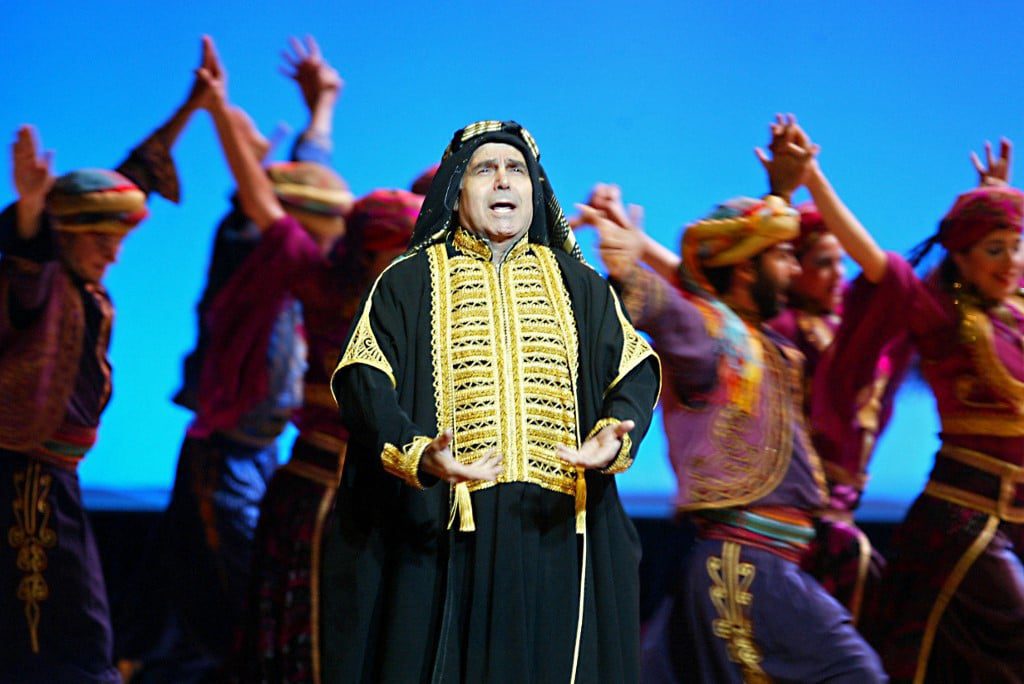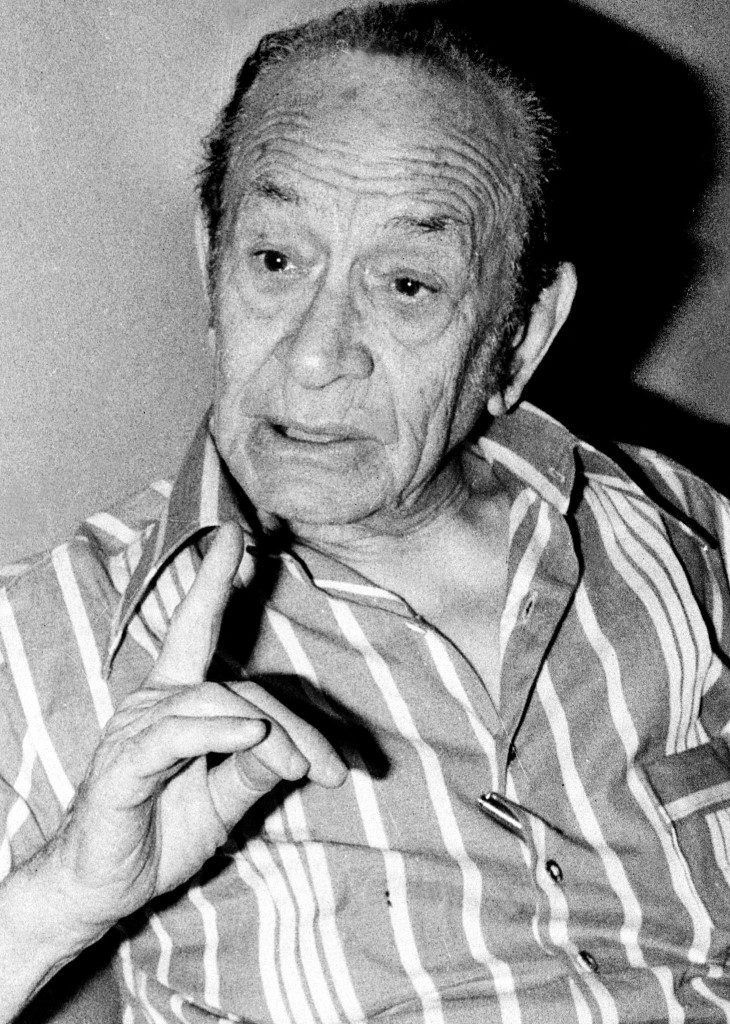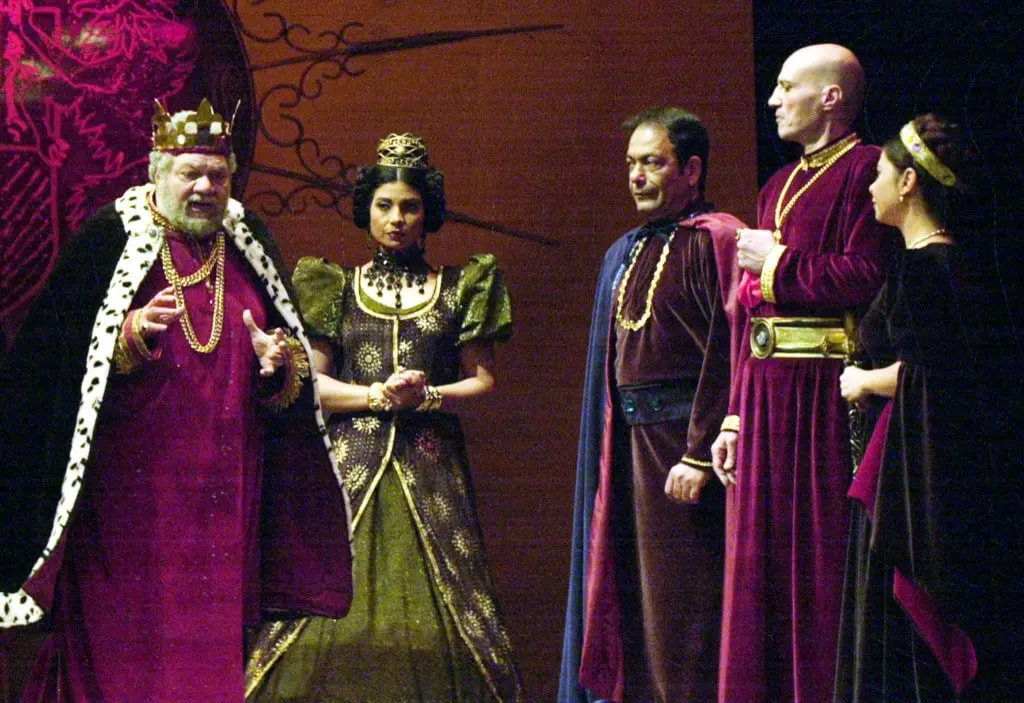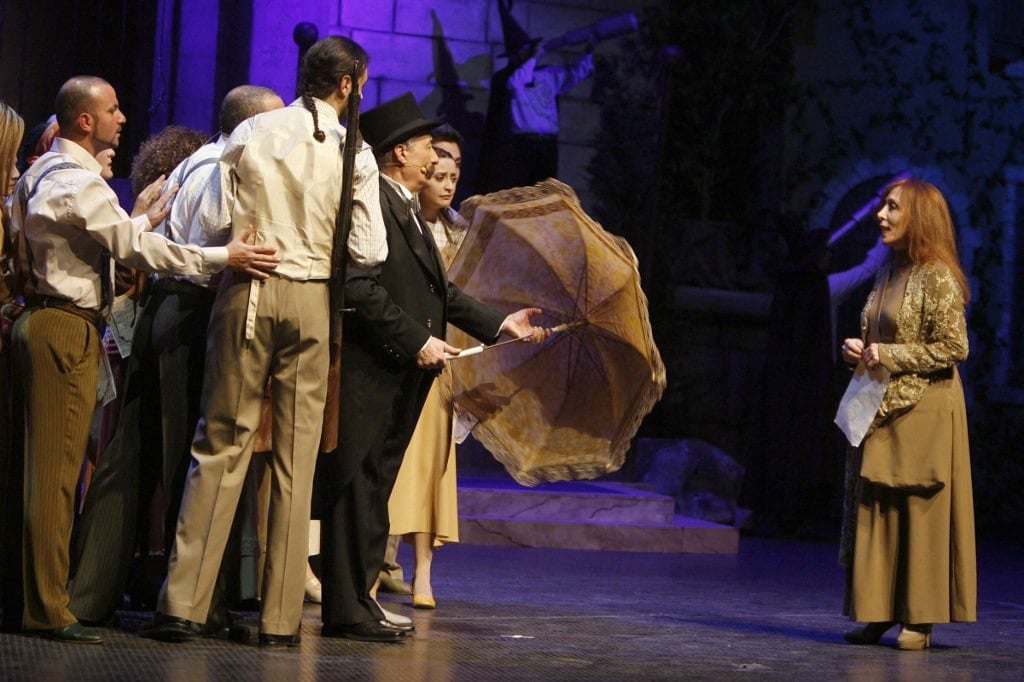
Youssef Sharqawi
To this day, there are discussions among intellectuals about the Arab theatre, its origin, and the reasons behind its delay. The division is still prevailing among them about the subject. Arab studies written to refute this issue are many, nearly as many as theatrical texts there are, or at least: nearly as much as what has been made to develop the Arab theatre.
Scholars are divided into groups. The first group viewed some phenomena in the Arab heritage and considered them a special kind of theatre. A second group acknowledged that performance literature wasn’t an original part of the Arab heritage. Rather, it was for this group a foreign art that came with the French campaign to Egypt in 1798, and thus Arabs heard about it. They didn’t get to know theatre until Maroun an-Naqqash introduced it in the middle of the 19th century.
The first group of scholars believed that the European Greek model of theatre is not the only one, as there are other models. Those scholars mentioned Arab literary seasons during Jahiliyyah (before Islam), which came along pilgrimage seasons, and literary markets such as Okaz, Dumah Al Jandal, Majanna, and Dhu ’l-Majaz̄. Moreover, they found a kind of theatrical performance in polemic poetry and mentioned that al-Qassas or al-Hakawati (both mean Storyteller), around which listeners would gather. Al-Hakawati is the single performer that narrates the story of all characters in the novel or the epic he tells. He tries to change his face and emotions to match the character he impersonates. Some of them compared this to the Italian comedy (Commedia dell’arte), which was popular in the Renaissance. They pointed the resemblance to the storyteller, who is called “al-Mohabez” in Egypt, “al-Qwal” in Morocco, “al-Hakawati” in the Levant, and “al-Rowayah” in Tunisia. They also added “al-Aragoz’’ to this category, in which puppets play the characters, whilst the puppeteer tells a story derived from heritage or reality. This art has developed until it became today’s puppetry.
Five factors delayed Arab theatre emergence
Many have supported this opinion, such as Muhammed Kamal al-Din, Ali Rai, and Ali Uqlah Arsan. Meanwhile, the other group of scholars continued to view theatre as a foreign art. They attributed the reason behind its late emergence to five factors, the first of which is the “social factor”. They believed that the bedouin social state that the Arab lived through during Jahiliyyah and the following eras did not give them an opportunity for stability and urbanization.
Moreover, Arabs by nature identify their personalities through the tribe, which doesn’t help individuals feeling distinctive, as all is one mass (the tribe). In this regard, Zaki Naguib Mahmoud said the following “Arabs didn’t come to know theatrical literature, but narrative literature. The reason behind that was that they didn’t pay attention to the distinction of individual characters from each other. In my opinion, the whole East has obliterated individualism. Each individual is a part of the tribe. He has no weight nor value compared to it.”
Tawfiq Al-Hakim stood by this opinion and explained it in the preface of his play “King Oedipus”.
The second factor in the late emergence of theatre is the “religious factor”. The supporters of this opinion believe that Arab religions before Islam were simple paganism, which is not based on a thought attempting to explain the world and the human being. These religions neither evolved nor produced rituals that may lead to the emergence of performing arts as it was with the Greek worshipping Dionysus or Bacchus.

After Islam, Arabs believed in one God, while Greek plays were filled with multiple gods and their conflicts with each other or with humans.
In his book “Dawn of Islam”, Ahmed Amin attributed the absence of theatrical thinking from Islamic – Arab thinking to religious reasons, as Islam forbids depiction, so consequently, it forbids acting. Moreover, Islam forbids Anthropomorphism and performing art gestures involved in theatrical arts.
The third factor comes in addition to the religious reasons, which is “the status of civilization”. In his book “The Arab Art of Acting”, Zaki Tolimat states that Arabs didn’t know theatre because they were at a primitive stage of civilization. According to Tolimat, the status of Arab civilization didn’t have reasons for evolution. There wasn’t civilization in a full sense in the Arabian Peninsula, a desert with a tribal spirit and nomad inhabitants.
Some scholars went so far in attributing reasons for the late emergence of theatre to the “mental” factor. They believed that the cause lies in the Arab mind and its nature, which is not based on analysis like Greece and other nations but is based on looking at entireties. This theory prevailed in orientalist literature, such as “Arthur de Gobineau” and “Ernest Renan”. They used this theory in a discourse full of racism, where they distinguished between the Semites – including the Arabs – and the Aryans, the sons of the West.
The fifth and the last factor is an artistic-linguistic one. Supporters of this opinion found that the Arabic language doesn’t suit the vitality and launch of theatrical language. They believed that Arabic is a language of kings and princes, not of common people. According to the French orientalist Jacques Berque, Arab traditions suffer from incompatibility with internal requirements of dramatic language when it comes to theatre.
In the middle of the 19th century, theatre finally arrived or emerged from someplace it was hiding. It came as an answer to a social and cultural need that the Arab society found itself in. The proof, as the scholar Farhan Bulbul thinks, that Lebanon – the cradle of the Arab theatre – knew foreign theatre a century before the birth of Arab theatre. Theatrical troupes in Egypt, such as “al-Mohbatyn” and “Oulad Rabiyah”, emerged about a century before the emergence of theatre there. Foreign theatre troupes have been visiting Egypt since the beginning of the 19th century. At that time, a European traveler said the following: “In the road between Alexandria and Cairo, I thought that I was in Italy. Wherever I look, I would see Italians who were members of the opera, the ballet, and the circus troupes that the Khedive had brought for the winter season. Meanwhile, the French only performed comedy.”
These troupes used to perform for Arabs and foreigners. However, introducing theatre in this early stage did not incite Arabs to reap the fruit of theatrical art until they felt they needed it. Due to this need, theatre – since its emergence – was linked to specific intellectual objectives. These objectives were political and social ones. The first theatre pioneers confirmed these objectives in their speeches.
Similar Characteristics for Using History in Theatre

Despite the distribution of Arab theatre in different countries, it has common features and similar characteristics that make it one in its multiplicity. In its beginnings, theatre leaned heavily on historical sources. Writers drew from history books and Arab heritage, and their resort to history was based on the characteristics it bears.
Firstly, Arab history is based on connected episodes. This history is at the same time the history of Islam that is embraced by the overwhelming majority of Arabs. Therefore, all Arabs considered the history of Islam to be their history. The relationship between the historical event and the Arab man is not solid only in the huge events, but in the small events that concern a country without the other as well. For example, the Denshawai incident in Egypt, the revolution of Omar al-Mukhtar in Libya, the revolution of Ben Badis in Algeria, and the Levant Crisis in Syria (when the French bombarded Damascus), all of these events had a collective Arab feeling. It is right to say that each country has its history before Islam. Egypt has the history of the Pharaohs. Iraq and the Levant were the space where Sumerians, Babylonians, Assyrians, and Arameans lived. Nevertheless, the integration of Arabs into Islamic history made the pre-Islamic eras a history for all Arabs. And thus, the Arab playwright has a wide variety of time and space to choose what he wants from historical events.
Secondly, throughout the century and a half, which is the age of Arab theatre, Arab countries lived in one condition. When theatre emerged and during its evolution, Arab countries were under Ottoman rule. When this rule ended, Western colonialism started. In the middle of the 20th century, Arab countries started to obtain their Independence. Despite the individual reality of each Arab country, the aspiration towards independence was one. This was the period that used to be called the “Arab Renaissance“. During that era, the Arab theatre faced the concerns of liberation and renaissance together, in a comprehensive manner. Ahmed Shawki’s historical plays were shown in Arab theatres, while his play “Esset Huda” remained within the borders of Egypt.
Thirdly, the theatre was an emergent art with no roots in the ancient Arab social and cultural life. In its birth stage, the theatre suffered from a single problem in all Arab countries, as it was met with discouragement because it was “depravity” and “immorality”.
At the same time, Arab dramatists were still learning the basics of such an art. They battled on two fronts. On the one hand, they wanted to establish a theatre in Arab life. On the other hand, they wanted to develop their tools. In this battle, history was the strongest weapon. People were presented with what they know from historical events and figures they appreciate. The list includes Salah al-Din al-Ayyubi, Tariq bin Ziyad, Khaled bin al-Walid, Sakr Quraish, and others.
Trends of Historical Plays in Arab Theatre

On another front, Arab scholars identified the directions or objectives of the historical material in Arab theatre in three-axis points. Each of these appeared in a stage of Arab history from the end of the 19th century until today.
The first axis was “enlightenment and political rise to fight the colonialists”. Since its emergence after the era of the first pioneers and till the middle of the 20th century, historical plays followed this direction. They were directed against the Turks then colonialism. Authorities persecuted these plays, just like what happened with “Hassan Marei” the writer of “Denshawai” play, and “Farah Antun” the writer of “Sultan Salah al-Din and the kingdom of Jerusalem”. At that time, the man said to authority officials: “Exile became probably easier than this harassment.”
The second axis lies in “Defending the Arab revolution and the new society”. When the Arab countries began to gain their independence in the middle of the 20th century, the realistic theatrical stage began. However, the Arab revolutions against the ruling regimes after independence highlighted the historical play again in a different way. Instead of choosing periods of fighting with foreign intruders, periods of conflict with the ruling authorities were chosen. As a result, the struggle turned to be between the Arab authority and the Arab people, and instead of choosing bright periods with victories, dark periods were chosen. The conquest of Andalusia would have been replaced with its fall. The fall of Baghdad and the invasion of the Levant were alternatives for the conquest of the Levant. Even protagonists were no longer among the leaders famous for their victories. Rather, they were among martyrs or common people.
As for the third axis, it is “reconsidering history”. Writers of this phase began to question the accuracy of what was mentioned in the books. They accused historians of obeying the ruling authorities, distorting, and forgery. These writers started to read into historical events with fresh eyes. Salah al-Din before this phase was a hero, but in this phase, the people were in the play “Bab Al-Futuh” by Mahmoud Diab. This writer declared his play as a trial for official history and its hired historians.
The Life of Arab Theatre in Several Stages
The Arab theatre has lived about a century and a half, then it regressed. It is possible to divide its life, both in progression and regression, into several historical phases:
The first phase extends from its emergence in Lebanon, Syria, and Egypt till WWI. In this face, Theatre was born between 1847 and 1871. Maroun an-Naqqash introduced it in Lebanon. After that, it was stagnant for 20 years to be born again in Damascus, and two years later in Egypt.
After the end of WWI, the Arab theatre entered the second phase, as it left the first phase its lowest features and acquired new features. In Syria, it spread from Damascus and Homs to the largest cities such as Aleppo and Hama. It also began to enter the Arab countries thanks to the Egyptian troupes that toured these countries.
Since the mid-1940s, the rising tide of the second phase began to recede. Meanwhile, the Arab countries were achieving their independence and facing post-independence crises, such as class inequality, social injustice, ignorance, and poverty. The Arab theatre entered the third phase and found itself facing the task of renewing and protecting an independent society. It contributed to change during the Arab revolutions calling for socialism. Then the defeat of June 1967 came. The theatre lived this phase until the mid-1980s, where it ended in a desperate and rapid recession.
Since its recession in the early 1980s, theatre lives in no more phases. This situation was reflected in festivals like Damascus Festival for Performing Arts. All ambitions failed or diminished. The theatre lost its call for change because the Arabs themselves were no longer able or willing to change. As for the current theatre, it is the son of current circumstances. It may win once, but it is defeated many times.
Sources:
[1] Arabs and the Phenomenon of Theatre (Arabic) / Ghassan Ghoneim / research paper / Damascus University / 2009.
[2] Theatre Theory, the first and second volumes (Arabic) / Mohamed Kamel Al-Khatib.
[3] Arab Theatre Reviews / Farhan Bulbul.
[4] A Thousand and One Year of Arab Theatre (Arabic)/ Alexandrovna Potetseva.
[5] Arab Theatre between Transmission and Rooting / a group of researchers.
[6] The play: its Inception, Stages of Development, and Indications of the Arabs Delay/ Ali Sabry.
[7] The Play in Modern Arabic Literature/ Khalil Moussa.
[8] Theater in the Arab world/ Ali Al-Rahi.
[9] Al Hayat Theatre Magazine, Issue 24-25.
DISCLAIMER
The opinions expressed in this publication are those of our bloggers. They do not purport to reflect the opinions or views of Fanack or its Board of Editors.


